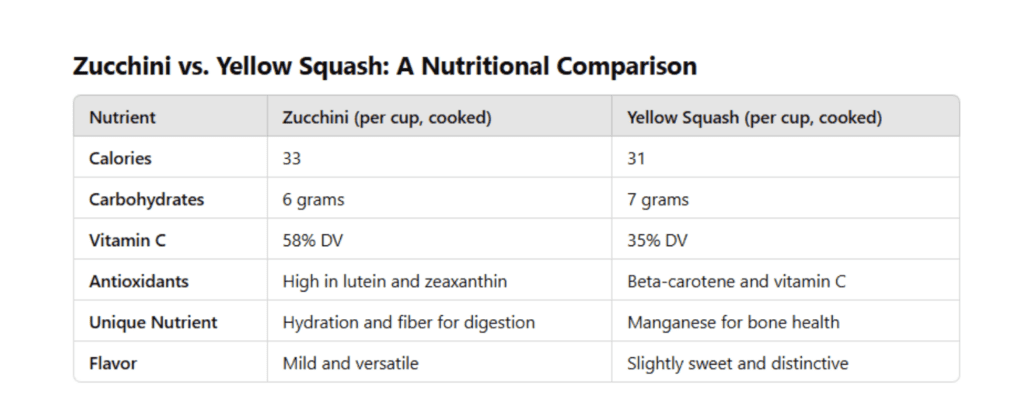

The Nutritional Showdown: Spinach vs. Iceberg Lettuce


Arya Soleil
Let’s get straight to the facts. Spinach leaves iceberg lettuce in the dust when it comes to nutrient density:
Iron: Spinach contains twice the iron of iceberg lettuce, making it a powerhouse for blood health and energy production. Iron plays a vital role in transporting oxygen throughout your body, keeping you energized and preventing fatigue.
Vitamin C: Spinach boasts three times the vitamin C found in iceberg lettuce. This essential antioxidant supports your immune system, promotes collagen production for healthy skin, and fights free radicals that cause aging and disease.
Magnesium: Spinach provides five times more magnesium than iceberg lettuce. Magnesium is often overlooked but is crucial for muscle function, nerve health, and maintaining a steady heartbeat. It also helps reduce inflammation and improves sleep quality.
Iceberg lettuce may add a refreshing crunch to your salad, but spinach delivers far more than texture—it’s a nutritional powerhouse that can transform your health.
Spinach: A Heart-Healthy Superfood
Your heart works tirelessly to keep you going, and spinach offers nutrients to keep it strong. Its high levels of potassium and magnesium help regulate blood pressure, while antioxidants like vitamin C and beta-carotene reduce inflammation and protect against arterial damage.
Spinach is also rich in nitrates, which have been shown to improve blood flow, relax blood vessels, and enhance overall cardiovascular function. Studies suggest that eating leafy greens like spinach can reduce the risk of heart disease and stroke.
Adding spinach to your meals isn’t just a way to elevate flavor—it’s an act of self-care for your heart.
Spinach as an Anti-Inflammatory Powerhouse
Inflammation is at the root of many chronic conditions, including arthritis, diabetes, and autoimmune disorders. Spinach is loaded with antioxidants, including flavonoids and carotenoids, which work to neutralize free radicals and calm inflammation in the body.
One standout antioxidant in spinach is lutein, which not only fights inflammation but also supports eye health, protecting against age-related vision issues like macular degeneration.
Incorporating spinach into your daily routine can help your body combat internal inflammation and promote long-term health.
A Plant-Based Source of Iron
Iron deficiency is one of the most common nutrient deficiencies, especially for women. While most people associate iron with red meat, spinach offers a plant-based source of non-heme iron, ideal for vegetarians and vegans.
Pairing spinach with a source of vitamin C—like citrus fruits or tomatoes—can further enhance iron absorption, ensuring your body gets the maximum benefit.
Adding spinach to smoothies, salads, or sautés is an easy and delicious way to boost your iron intake and keep fatigue at bay.
Strengthen Bones with Spinach’s Magnesium and Calcium
Spinach doesn’t just build muscles—it helps build strong bones, too. With five times the magnesium of iceberg lettuce, spinach supports bone density, reduces the risk of osteoporosis, and keeps your skeletal system resilient as you age.
It also contains vitamin K, which plays a critical role in bone metabolism and helps the body absorb calcium more effectively. Combining spinach with healthy fats, like olive oil or avocado, enhances the absorption of fat-soluble vitamins like vitamin K, maximizing its benefits.
A Digestive Health Ally
Spinach’s high fiber content makes it a natural supporter of digestion. Fiber not only prevents constipation but also acts as a prebiotic, feeding the good bacteria in your gut.
Unlike iceberg lettuce, which is mostly water with minimal fiber, spinach adds substance to your meals while supporting a healthy microbiome. A balanced gut contributes to better digestion, improved nutrient absorption, and even enhanced mood.
Supports Detoxification Naturally
If you’re looking to give your body a natural detox, spinach is a perfect choice. Its chlorophyll content helps cleanse the liver and eliminate toxins from the body.
Spinach also contains folate, a B-vitamin essential for cellular repair and DNA production. This makes it an excellent food for renewal and restoration, supporting the body’s natural detox processes without the need for extreme cleanses or restrictive diets.
The Beauty Benefits of Spinach
Spinach doesn’t just nourish your insides—it helps you glow on the outside, too. Thanks to its rich supply of vitamin C, vitamin E, and beta-carotene, spinach protects your skin from oxidative stress and encourages collagen production for firmer, more radiant skin.
The iron in spinach also supports healthy hair growth by improving oxygen circulation to hair follicles, while its high water content keeps skin hydrated and supple.
Easy Ways to Eat More Spinach
Adding spinach to your meals is easier than you might think. Its mild flavor blends seamlessly into smoothies, salads, and soups, making it a versatile ingredient for any time of day:
Smoothies: Blend fresh spinach with bananas, berries, and almond milk for a nutrient-packed breakfast.
Salads: Toss raw spinach with avocado, nuts, and a drizzle of olive oil for a quick and filling lunch.
Sautéed Sides: Lightly sauté spinach with garlic and olive oil for an easy, flavorful side dish.
Egg Scrambles: Add chopped spinach to omelets or scrambled eggs for a boost of color and nutrition.
Soups and Stews: Stir spinach into soups during the last few minutes of cooking to preserve its nutrients.
Spinach Wins the Nutritional Battle
While iceberg lettuce may add crunch to your plate, it simply can’t compete with the nutritional powerhouse that spinach offers. With twice the iron, three times the vitamin C, and five times the magnesium, spinach is a clear winner when it comes to supporting heart health, reducing inflammation, and promoting radiant skin.
It’s time to elevate your greens. Whether blended into smoothies, tossed in salads, or cooked into savory dishes, spinach is the upgrade your plate deserves.
Recommended Reads

- December 29, 2024
Check out 7 truths and myths about diet
Have you ever heard of some diet myths that...


- December 29, 2024
Is fasting really a good option? Check out the precautions of this eating style
Living in a society that is based on a...


- December 29, 2024
Start having healthy habits with these 7 benefits of a balanced diet!
If you want to live a quality life, you...


- December 29, 2024
Check out the list of 54 anti-inflammatory foods for your diet!
A balanced diet ensures all the nutrients possible for a routine...


- December 29, 2024
Find out how to cut back on sugar in your diet!
It’s very likely that at some point in your...


- December 29, 2024
What are the benefits of each vitamin in your body?
If your goal is to have a healthy routine and...

The Nutritional Showdown: Spinach vs. Iceberg Lettuce

Let’s get straight to the facts. Spinach leaves iceberg lettuce in the dust when it comes to nutrient density:
Iron: Spinach contains twice the iron of iceberg lettuce, making it a powerhouse for blood health and energy production. Iron plays a vital role in transporting oxygen throughout your body, keeping you energized and preventing fatigue.
Vitamin C: Spinach boasts three times the vitamin C found in iceberg lettuce. This essential antioxidant supports your immune system, promotes collagen production for healthy skin, and fights free radicals that cause aging and disease.
Magnesium: Spinach provides five times more magnesium than iceberg lettuce. Magnesium is often overlooked but is crucial for muscle function, nerve health, and maintaining a steady heartbeat. It also helps reduce inflammation and improves sleep quality.
Iceberg lettuce may add a refreshing crunch to your salad, but spinach delivers far more than texture—it’s a nutritional powerhouse that can transform your health.
Spinach: A Heart-Healthy Superfood
Your heart works tirelessly to keep you going, and spinach offers nutrients to keep it strong. Its high levels of potassium and magnesium help regulate blood pressure, while antioxidants like vitamin C and beta-carotene reduce inflammation and protect against arterial damage.
Spinach is also rich in nitrates, which have been shown to improve blood flow, relax blood vessels, and enhance overall cardiovascular function. Studies suggest that eating leafy greens like spinach can reduce the risk of heart disease and stroke.
Adding spinach to your meals isn’t just a way to elevate flavor—it’s an act of self-care for your heart.
Spinach as an Anti-Inflammatory Powerhouse
Inflammation is at the root of many chronic conditions, including arthritis, diabetes, and autoimmune disorders. Spinach is loaded with antioxidants, including flavonoids and carotenoids, which work to neutralize free radicals and calm inflammation in the body.
One standout antioxidant in spinach is lutein, which not only fights inflammation but also supports eye health, protecting against age-related vision issues like macular degeneration.
Incorporating spinach into your daily routine can help your body combat internal inflammation and promote long-term health.
A Plant-Based Source of Iron
Iron deficiency is one of the most common nutrient deficiencies, especially for women. While most people associate iron with red meat, spinach offers a plant-based source of non-heme iron, ideal for vegetarians and vegans.
Pairing spinach with a source of vitamin C—like citrus fruits or tomatoes—can further enhance iron absorption, ensuring your body gets the maximum benefit.
Adding spinach to smoothies, salads, or sautés is an easy and delicious way to boost your iron intake and keep fatigue at bay.
Strengthen Bones with Spinach’s Magnesium and Calcium
Spinach doesn’t just build muscles—it helps build strong bones, too. With five times the magnesium of iceberg lettuce, spinach supports bone density, reduces the risk of osteoporosis, and keeps your skeletal system resilient as you age.
It also contains vitamin K, which plays a critical role in bone metabolism and helps the body absorb calcium more effectively. Combining spinach with healthy fats, like olive oil or avocado, enhances the absorption of fat-soluble vitamins like vitamin K, maximizing its benefits.
A Digestive Health Ally
Spinach’s high fiber content makes it a natural supporter of digestion. Fiber not only prevents constipation but also acts as a prebiotic, feeding the good bacteria in your gut.
Unlike iceberg lettuce, which is mostly water with minimal fiber, spinach adds substance to your meals while supporting a healthy microbiome. A balanced gut contributes to better digestion, improved nutrient absorption, and even enhanced mood.
Supports Detoxification Naturally
If you’re looking to give your body a natural detox, spinach is a perfect choice. Its chlorophyll content helps cleanse the liver and eliminate toxins from the body.
Spinach also contains folate, a B-vitamin essential for cellular repair and DNA production. This makes it an excellent food for renewal and restoration, supporting the body’s natural detox processes without the need for extreme cleanses or restrictive diets.
The Beauty Benefits of Spinach
Spinach doesn’t just nourish your insides—it helps you glow on the outside, too. Thanks to its rich supply of vitamin C, vitamin E, and beta-carotene, spinach protects your skin from oxidative stress and encourages collagen production for firmer, more radiant skin.
The iron in spinach also supports healthy hair growth by improving oxygen circulation to hair follicles, while its high water content keeps skin hydrated and supple.
Easy Ways to Eat More Spinach
Adding spinach to your meals is easier than you might think. Its mild flavor blends seamlessly into smoothies, salads, and soups, making it a versatile ingredient for any time of day:
Smoothies: Blend fresh spinach with bananas, berries, and almond milk for a nutrient-packed breakfast.
Salads: Toss raw spinach with avocado, nuts, and a drizzle of olive oil for a quick and filling lunch.
Sautéed Sides: Lightly sauté spinach with garlic and olive oil for an easy, flavorful side dish.
Egg Scrambles: Add chopped spinach to omelets or scrambled eggs for a boost of color and nutrition.
Soups and Stews: Stir spinach into soups during the last few minutes of cooking to preserve its nutrients.
Spinach Wins the Nutritional Battle
While iceberg lettuce may add crunch to your plate, it simply can’t compete with the nutritional powerhouse that spinach offers. With twice the iron, three times the vitamin C, and five times the magnesium, spinach is a clear winner when it comes to supporting heart health, reducing inflammation, and promoting radiant skin.
It’s time to elevate your greens. Whether blended into smoothies, tossed in salads, or cooked into savory dishes, spinach is the upgrade your plate deserves.

Which Should You Choose?
Both zucchini and yellow squash are excellent choices for a healthy diet, but the best pick depends on your goals and taste preferences:
For Digestion and Hydration: Zucchini’s high water and fiber content make it ideal for promoting gut health.
For Skin and Bone Health: Yellow squash’s beta-carotene and manganese make it a standout for maintaining strong bones and glowing skin.
For Versatility: Zucchini’s mild flavor works well in both savory and sweet recipes, while yellow squash shines in dishes where its natural sweetness can take center stage.
Incorporating Zucchini and Yellow Squash into Your Diet
Why choose just one? Incorporating both zucchini and yellow squash into your meals adds variety and ensures you’re reaping the unique benefits of each. Here are some ideas to get you started:
Zucchini and Yellow Squash Stir-Fry
Combine sliced zucchini and yellow squash in a quick stir-fry with garlic, olive oil, and your favorite seasonings for a simple, nutrient-packed side dish.
Layered Summer Squash Casserole
Alternate layers of zucchini and yellow squash with marinara sauce, mozzarella, and herbs for a healthy twist on lasagna.
Grilled Squash Medley
Toss zucchini and yellow squash slices with olive oil, salt, and pepper, then grill them for a smoky, caramelized flavor.
Roasted Squash Soup
Roast both varieties with onions and garlic, then blend with vegetable broth for a creamy, comforting soup.
The Bottom Line
Zucchini and yellow squash are nutritional powerhouses that bring unique flavors and benefits to your table. Zucchini offers a mild, versatile option that supports digestion and hydration, while yellow squash’s sweet flavor and nutrient profile make it a standout for skin and bone health.
Instead of choosing one over the other, why not embrace the best of both worlds? Incorporating these vibrant squashes into your meals not only boosts your nutrition but also adds variety and creativity to your cooking.

Arya Soleil
More Topics


The Incredible Health Benefits of Cucumbers: Why This Hydrating Superfood Deserves More Attention

Is Eating Raw Food Really “Too Extreme”? Rethinking Health Before It’s Too Late

The Truth About Bacon: Is It Really Bad for You?

Why Grass-Fed Butter is Good for You

Top 4 Vitamins for Brain Health: Nourish Your Mind Naturally
Recommended Reads

- December 29, 2024
Check out 7 truths and myths about diet
Have you ever heard of some diet myths that...


- December 29, 2024
Is fasting really a good option? Check out the precautions of this eating style
Living in a society that is based on a...


- December 29, 2024
Start having healthy habits with these 7 benefits of a balanced diet!
If you want to live a quality life, you...


- December 29, 2024
Check out the list of 54 anti-inflammatory foods for your diet!
A balanced diet ensures all the nutrients possible for a routine...


- December 29, 2024
Find out how to cut back on sugar in your diet!
It’s very likely that at some point in your...


- December 29, 2024
What are the benefits of each vitamin in your body?
If your goal is to have a healthy routine and...

